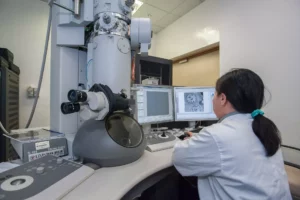The world stands at a precipice, facing a critical water scarcity crisis that threatens the very foundation of life, social stability, and economic prosperity. As urbanization progresses and climate change intensifies, the staggering reality is that over half of humanity resides in regions plagued by inadequate and polluted water supplies. This dual problem of water
In an era where agricultural practices heavily rely on various chemical agents, the rising concerns about environmental and food safety cannot be overstated. With the widespread use of organophosphate insecticides like profenofos and isocarbophos in farming, the potential for harmful residues contaminating our ecosystems and food supplies grows alarmingly. These pesticides, while effective in managing
In an era where digital security and fast data processing have become paramount, the arrival of quantum computing stands to reshape our understanding and capabilities in these domains. Unlike their classical counterparts, which are bound by binary limitations—0s and 1s—quantum computers utilize qubits that possess quantum characteristics such as superposition and entanglement. These features not
In a groundbreaking endeavor, a recent deep-sea expedition embarked on an ambitious journey to the isolated South Sandwich Islands, one of the most remote locations on our planet. Sponsored by the Schmidt Ocean Institute and conducted aboard the state-of-the-art research vessel Falkor (too), this 35-day mission is part of a larger initiative known as the
For decades, fitness enthusiasts have engaged in fervent discussions surrounding one pivotal question: Should cardio be performed before or after weightlifting? This debate has successfully divided gym-goers into two camps, each firm in their convictions about the proper sequence of workouts. Some swear by the benefits of a cardio session to warm up, while others
In an extraordinary display of intelligence, sulfur-crested cockatoos in Western Sydney have adapted their behaviors in response to urban life, revealing a newfound ability to manipulate water fountains. Known scientifically as Cacatua galerita, these birds have already established a reputation for their cunning, having previously learned to access garbage bins for food. Their remarkable capacity
For those who embrace extreme workouts, the euphoric rush often overshadows potential drawbacks. However, recent findings shed light on the often-overlooked consequences of intense exercise on our immune system. A comprehensive analysis from 2023, involving over 4,700 fluid samples from firefighters, reveals a concerning pattern: while regular physical activity is synonymous with enhanced health, extreme
Softgel capsules have become a staple in the medicinal and dietary supplement market, known for their smooth texture and ease of swallowing. Patients and health enthusiasts alike appreciate these capsules for being less cumbersome than traditional tablets, allowing for a more pleasant ingestion experience. The appeal of softgels lies in their ability to deliver a
Humpback whales, known scientifically as Megaptera novaeangliae, have captivated the curious minds of researchers and nature lovers alike due to their majestic presence and intricate behaviors. Among these behaviors, the act of blowing bubble rings has recently sparked discussions about potential communication between these gentle giants and humans. A new study delving into this unique
Titan, Saturn’s largest moon and an enigmatic celestial body, has long captivated scientists and astronomers alike. Its atmosphere, dense and rich in organic compounds, has made it a focal point for understanding not only the moon itself but also the broader dynamics of planetary atmospheres. Recent research from the University of Bristol has unveiled a
Recent advancements in material science have brought significant insights into the profound transformation of glass into glass-ceramics, a process that can lead to stronger and heat-resistant materials. A collaboration between esteemed entities, including NIMS, AGC Inc., and JASRI, has revealed the intricate science of crystal nucleation in glass, an area previously shrouded in mystery. Their
Recent investigations into muscle physiology have unveiled a groundbreaking perspective that reinterprets our understanding of muscle contraction mechanisms. A compelling study from the University of Michigan suggests that the internal flow of water within muscle fibers is integral to determining the rapidity of muscular contractions. This realization calls for us to rethink the traditional dimension
Often viewed as vulnerable entities constantly under threat, reef islands are much more dynamic than conventional wisdom suggests. This understanding is gaining traction thanks to recent research conducted by an international team led by Yannis Kappelmann from the Leibniz Center for Tropical Marine Research in Bremen, Germany. The study focused on Langkai, an island in
New insights from the Karolinska Institute in Sweden have emerged, revealing a concerning correlation between the use of specific psychiatric medications and an increased risk of developing amyotrophic lateral sclerosis (ALS), the most prevalent form of motor neuron disease (MND). This groundbreaking study sheds light on the intricate relationship between mental health treatments and degenerative
In an era marked by urgent calls for sustainable practices, the recent research from the Industrial Sustainable Chemistry (ISC) group at the Van ‘t Hoff Institute for Molecular Sciences unveils a groundbreaking advancement in the field of polymers. The team has developed a unique class of PISOX (bio- and CO2-based) polymers that exhibit a remarkable















